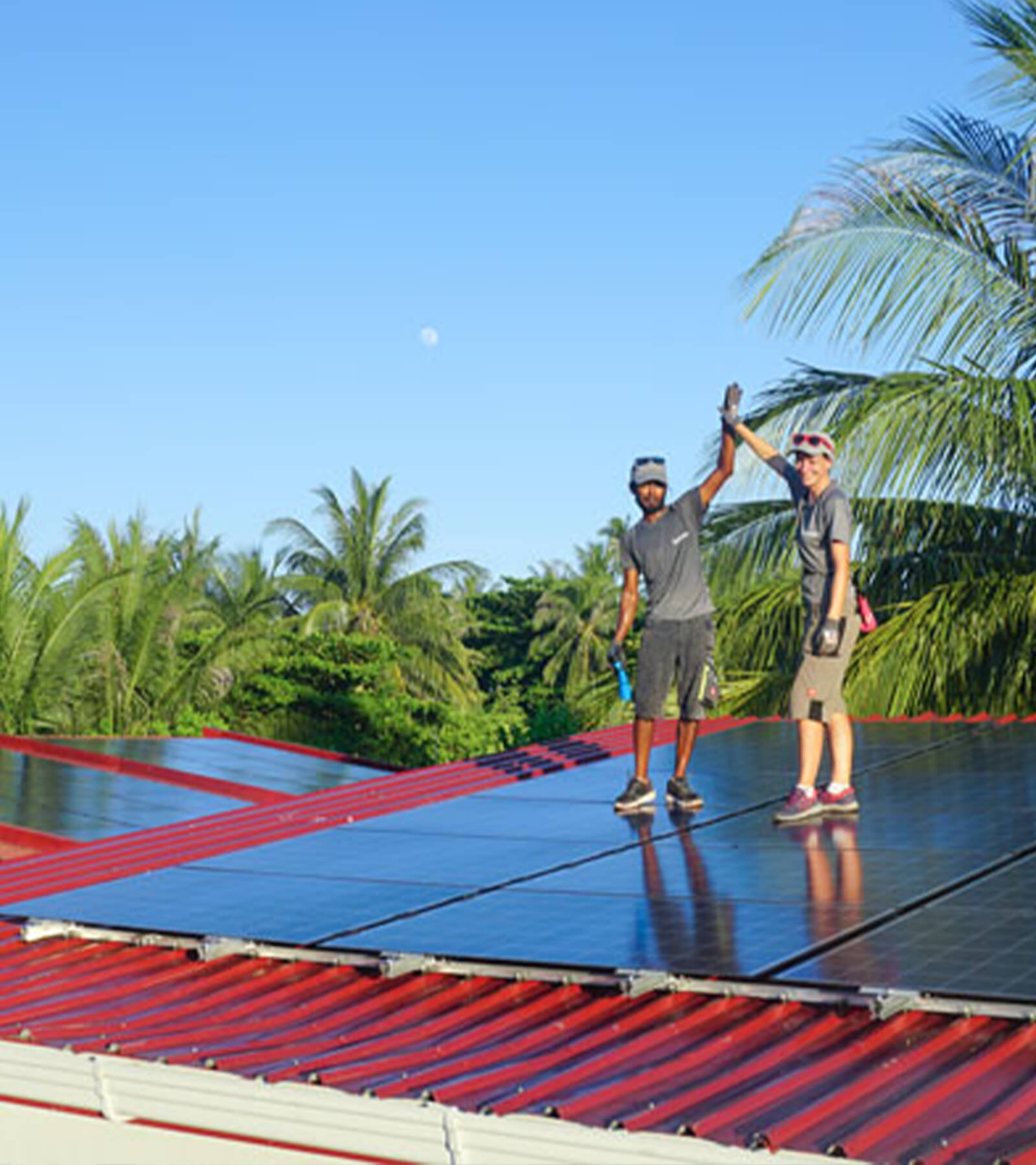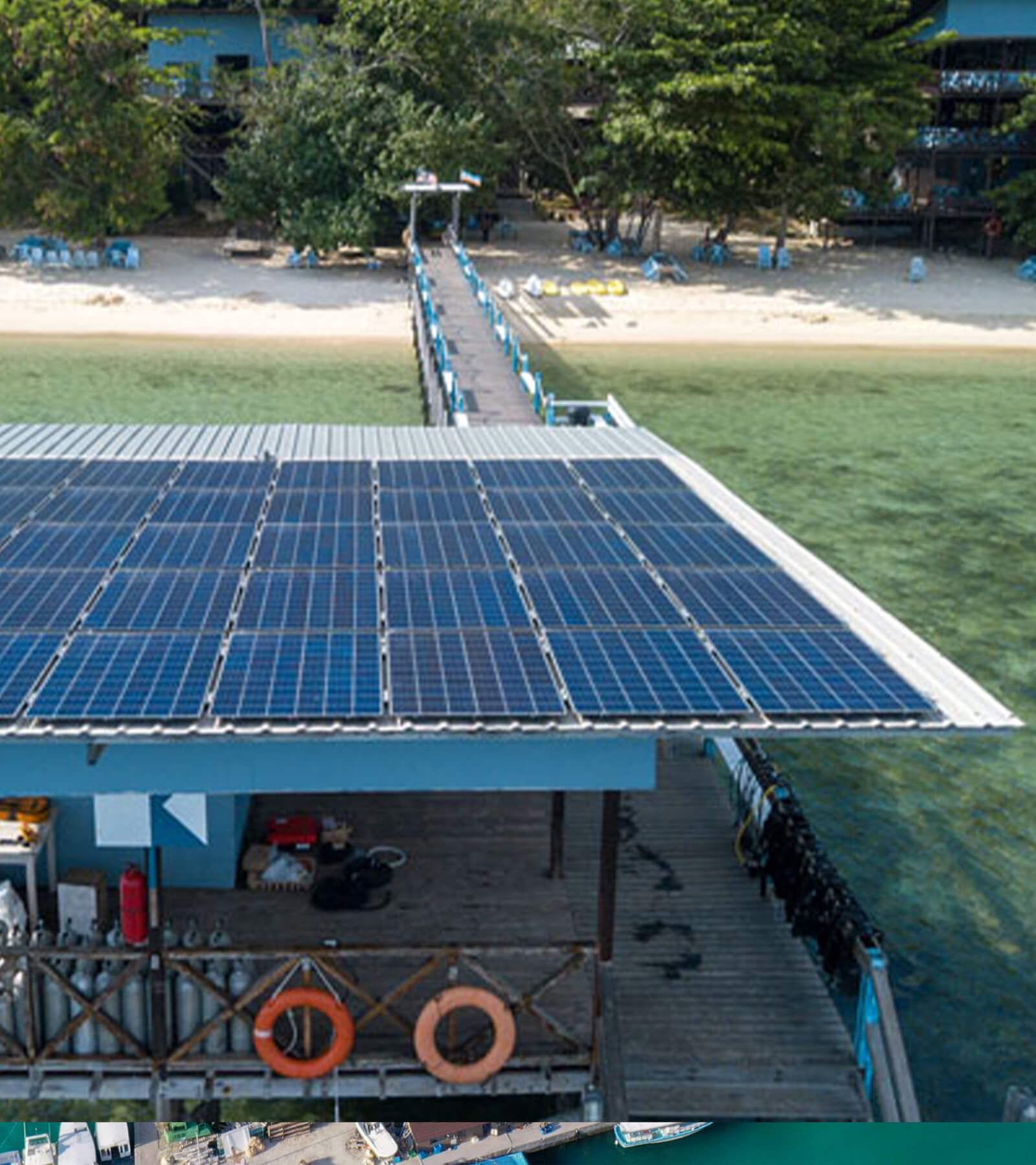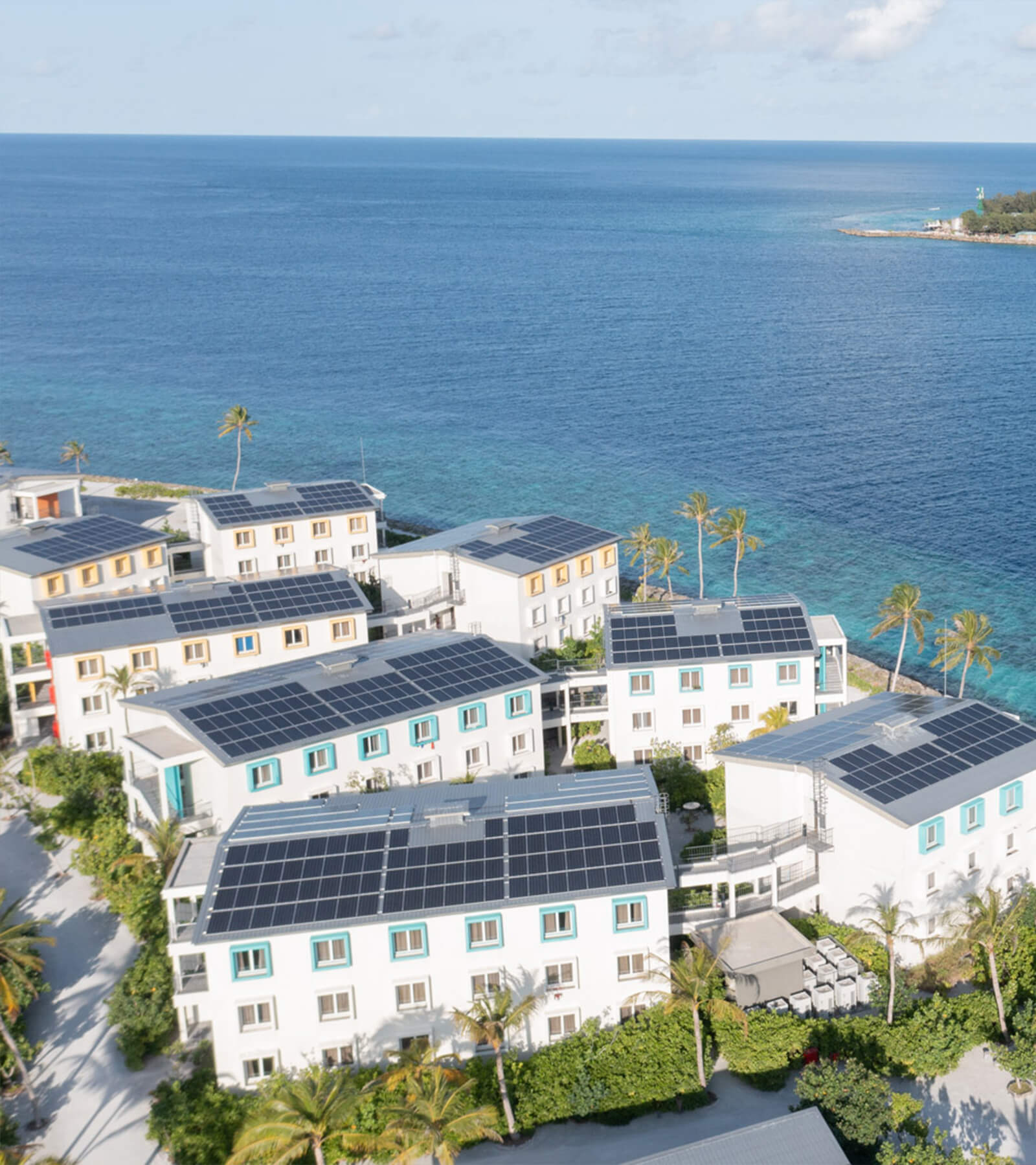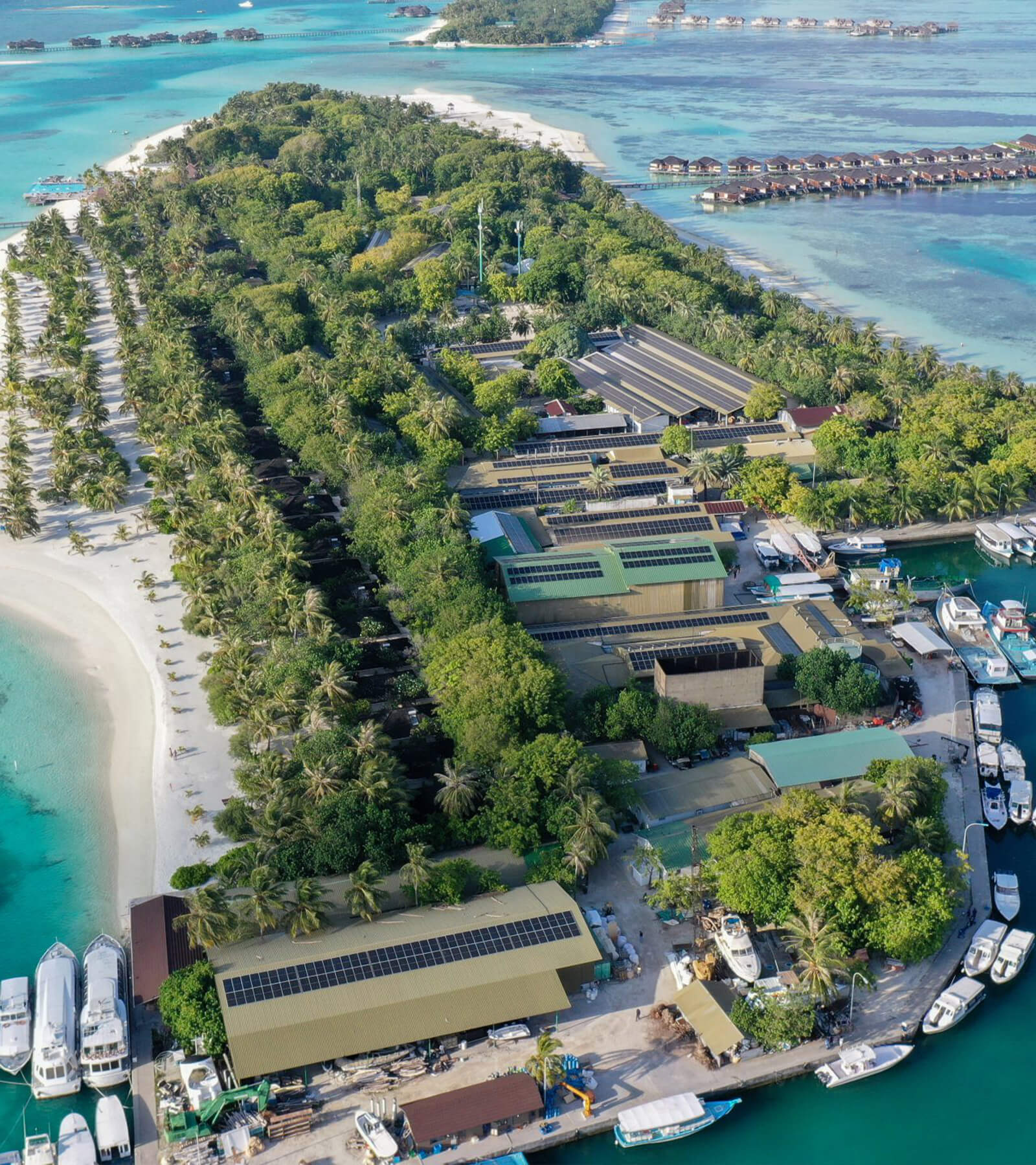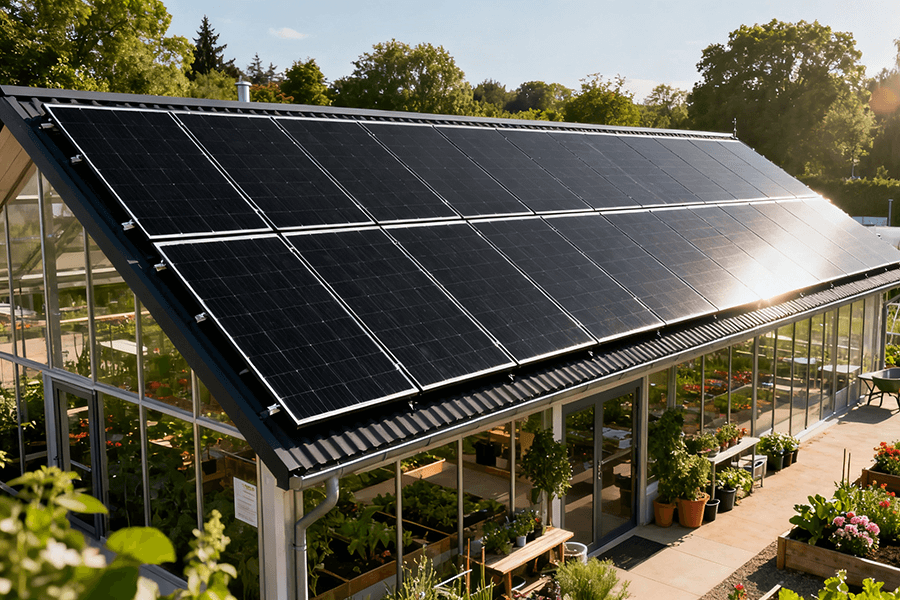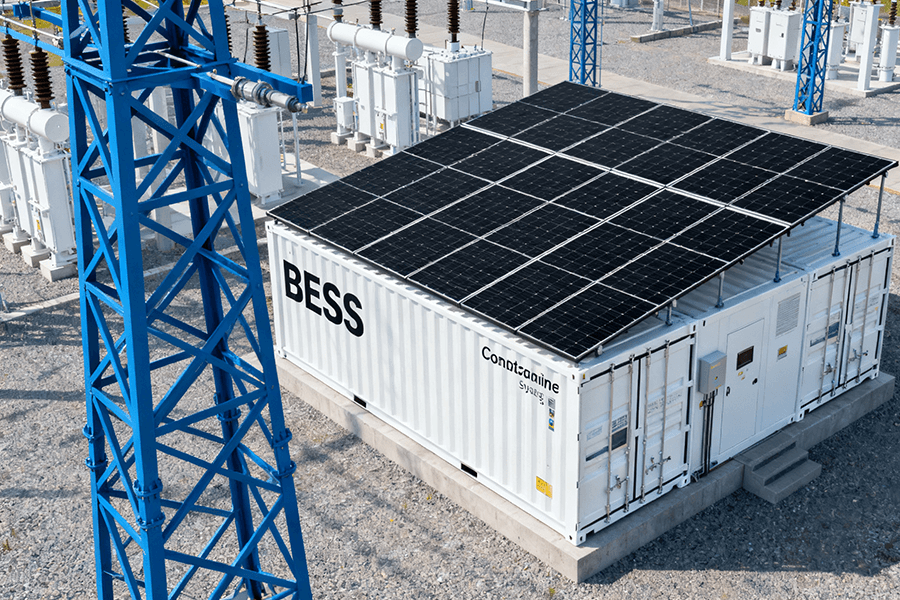Wondering if a 16kW solar system with battery storage in Germany is worth your Pfennig? We break down 2024’s real costs (€15k–€22k for panels + €8k–€12k for batteries), KfW’s juicy 40% cashback, and why winter in Hamburg makes batteries as essential as socks.
Spoiler alert: Payback periods hit 6–9 years—faster than a Tesla on the Autobahn. Bonus: How to dodge VAT and outsmart cloudy days. Data’s fresh, jokes are bad, and yes, we’ve included obligatory pretzel analogies.

Why a 16kW Solar System? Because Bigger Panels = Bigger Bragging Rights
Let’s face it: Germans adore efficiency almost as much as they adore Brezeln (pretzels) and punctual trains. A 16kW solar system isn’t just a flex for eco-warriors—it’s a practical beast for medium-to-large homes (think 4+ bedrooms) or small businesses (like your neighborhood Bäckerei). But why 16kW? Because it’s the Goldilocks zone: big enough to slash your bills, small enough to avoid neighborly envy (unless you’re into that).
The 2024 Price Tag: €15k–€22k (Or “Why Cheap Panels Are Like Flat Beer”)
In 2024, the average cost for a 16kW solar setup in Germany ranged from €15,000 to €22,000, depending on whether you opted for budget panels or premium ones with warranties longer than a Berlin winter. Here’s the breakdown:
| Component | Cost Range (2024) | Notes |
|---|---|---|
| Solar Panels | €9,000 – €14,000 | Tier 1 brands (e.g., Qcells, Solarwatt) cost 15-20% more but last 25+ years. Source |
| Inverters | €2,500 – €4,000 | Hybrid inverters (for battery compatibility) add €500–€1,000. |
| Installation & Misc | €3,500 – €4,000 | Includes wiring, mounts, and labor. Pro tip: Don’t DIY unless you’re a certified Elektriker. |
Why splurge on quality?
- Budget panels degrade faster (1.5% annually vs. 0.5% for premium).
- Cheaper inverters often conk out before your first Weihnachtsmarkt visit. Source
The “Oktoberfest Effect”: What Happens When You Go Cheap
Imagine rewiring your solar system during Oktoberfest because your bargain-bin inverter fried itself. Not fun. As Germany’s Federal Solar Association (BSW-Solar) noted in 2024, ~12% of low-cost residential systems faced major repairs within 5 years—compared to just 3% for premium setups. Moral of the story: Solar panels aren’t Aldi vs. Edeka; this is one area where Geiz ist nicht geil (stinginess isn’t sexy).
Who Needs a 16kW System? (Spoiler: Not Your Dachshund)
- Households using 6,000–8,000 kWh/year: Perfect for families charging EVs, running heat pumps, or powering a Kaffeevollautomat 24/7.
- Small businesses: Bakeries, workshops, or that hipster Kombucha brewery down the street.
- Future-proofers: Planning to add a battery, pool heater, or Sauna? A 16kW system laughs at your ambitions.
Fun Fact: A 16kW System Powers 3.5 German Households… or 1 American One
Thanks to Germany’s Energieeffizienz obsession, the average home here uses just 3,500–4,500 kWh/year—about half the U.S. average (U.S. EIA). So yes, a 16kW system in Bavaria could technically power three families… or one Texan mansion with a hot tub shaped like a cowboy hat.
Batteries: Because Even the Sun Needs a Coffee Break (Especially in Winter)
Let’s be real: German winters are darker than a Krimi plot twist. That’s why pairing your 16kW solar system with a battery isn’t just smart—it’s survivalist. In 2024, a 10kWh battery (think Sonnen’s sleek Baron or Tesla’s Powerwall) cost €8,000–€12,000, but thanks to Germany’s VAT exemption, you saved 19% overnight. That’s €1,500–€2,300 back in your pocket—enough for a lifetime supply of Kaffee und Kuchen while your neighbors freeze in the dark.
Battery Prices 2024: Pay More Now, Cry Less Later
| Battery Model | Capacity | Price (2024) | Key Stats |
|---|---|---|---|
| SonnenBaron 10 | 10 kWh | €11,500 – €12,000 | 10,000-cycle warranty, works at -20°C (perfect for Bavarian winters). Source |
| Tesla Powerwall 3 | 13.5 kWh | €9,500 – €10,500 | Higher capacity, but 15% efficiency loss below 0°C. Source |
| E3/DC Home 10 | 10 kWh | €8,000 – €9,000 | Budget-friendly, but only 6,000 cycles. “Günstig, aber nicht geil.” Source |
Why the price gap?
- Chemistry: Lithium iron phosphate (Sonnen) lasts longer than nickel-based (E3/DC).
- Software: Smart systems like Sonnen’s Community optimize energy swaps with neighbors.
- Warranty: Pay €3k extra for a 20-year warranty, or gamble like a Spielbank regular.
The VAT Exemption: Germany’s Way of Saying “Danke, Solar Warrior”
In 2024, Germany scrapped the 19% VAT on standalone batteries (thanks to the Renewable Energy Act amendment (EEG 2023)). Here’s the math:
- Pre-VAT exemption: €11,500 battery → €13,685 with tax.
- Post-exemption: €11,500 flat (saving €2,185).
That’s not a discount—it’s a Steuererstattung (tax refund) for saving the planet. Pro tip: Pair your battery with solar to claim the full exemption.
Winter Storage: When Your Battery Earns Its Keep
Germany’s December solar output plummets to 0.5–1.5 kWh per kW installed (Fraunhofer ISE). For a 16kW system, that’s just 8–24 kWh/day—barely enough to power a Weihnachtsbeleuchtung (Christmas lights) addiction. Enter the battery:
| Scenario | Without Battery | With 10kWh Battery |
|---|---|---|
| Nighttime Energy Use | Grid-dependent | 70-100% self-powered |
| Peak Hour Savings | €0.35/kWh → Pain | €0.35/kWh → LOL |
| Blackout Survival | Kerzen (candles) | Netflix & Glühwein |
In Hamburg, where winter clouds camp like Festival tents, batteries recoup costs 2 years faster than in sunnier Munich (Energy-Charts.de).
KfW Subsidies: Your Tax Euros at Work (Finally, Something Exciting)
Let’s be honest: Nothing screams “German efficiency” like the government paying you to save money. In 2024, KfW (Germany’s state-owned development bank) went full “halt mein Bier” mode, offering up to 40% cashback for solar + battery combos. For a €30,000 system, that’s €12,000 back—enough to fund a lifetime of Currywurst or a down payment on a Waldhütte.
The KfW 442 Program: Free Money, But With Paperwork
Under the KfW 442 Renewable Energy Program, homeowners and businesses could claim 30-40% of system costs as a direct grant, depending on income and location. The catch? You had to use certified installers and Tier 1 equipment (no AliExpress solar panels, danke).
| System Type | Subsidy Rate | Max Grant | Example Savings |
|---|---|---|---|
| Solar Only | 20–30% | €15,000 | €22,000 system → €6,600 back |
| Solar + Battery | 30–40% | €30,000 | €30,000 system → €12,000 back |
| Low-Income Households | +10% Bonus | €35,000 | Single parents in Saxony? Cha-ching. Source |
Pro tip: The 40% rate applied to systems in Kohleausstieg (coal phase-out) regions like Brandenburg and Saxony. Because nothing says “eco-justice” like subsidizing ex-coal miners to go solar.
How to Spend Your €12,000 (Besides Lederhosen)
Let’s break down the math for a 16kW solar + 10kWh battery combo:
- Total cost (2024): €22,000 (panels) + €11,000 (Sonnen battery) = €33,000
- KfW grant (40%): €13,200 back
- Net cost: €19,800 (or €0.08/kWh over 20 years—cheaper than Aldi milk).
Even better: Combine this with the VAT exemption (saving another €4,500), and suddenly your €33,000 system costs €15,300. That’s a 54% discount—Ja, bitte!
The Fine Print: Why 40% Isn’t for Everyone
- Income caps: Households earning over €60,000/year got only 30%. Neidgesellschaft (envy society) at its finest.
- Battery rules: Only systems with ≥80% “green self-consumption” qualified. Translation: No selling 100% back to the grid while hoarding energy like a Hamster.
- Deadlines: Applications closed in Q4 2024 after funds ran out faster than Club Mate at a hackathon. Source
Winter Solar Output: Munich vs. Hamburg (Spoiler: Both Are Kalt)
Let’s play a game: “Spot the Sun in December.” Spoiler alert—it’s harder than finding a parking spot in Berlin. While Germany’s winter solar output drops nationwide, the gap between Munich and Hamburg is wider than the Oktoberfest beer tents.
December Showdown: Alpine Glare vs. North Sea Gloom
| Metric | Munich | Hamburg |
|---|---|---|
| Avg. Sunlight Hours | 2.1 hours/day | 1.3 hours/day |
| Cloud Cover | 75% | 88% |
| 16kW System Output | 400–500 kWh/month | 250–350 kWh/month |
| Key Culprit | Alpine snow glare (boosts output!) | North Sea clouds (eternal Grau) |
| Source | DWD Climate Data 2024 | Energy-Charts.de |
Why Munich wins (barely):
- Albedo effect: Snow reflects 80% more light than grass, giving Munich’s panels a Wintersport boost.
- Geography: Föhn winds clear skies occasionally—unlike Hamburg’s maritime Schmuddelwetter.
Battery or Bust: Surviving the Dunkelflaute
A 16kW system in Hamburg produces just 8–11 kWh/day in December. Meanwhile, the average household burns 20–30 kWh/day on heating, lights, and Weihnachtsmarkt waffle irons. Let’s math this out:
| Scenario | Munich (500 kWh) | Hamburg (300 kWh) |
|---|---|---|
| Daily Solar Generation | 16–17 kWh | 9–10 kWh |
| Avg. Household Consumption | 25 kWh | 25 kWh |
| Grid Reliance | 35% deficit | 60% deficit |
| 10kWh Battery Impact | Covers 70% of deficit | Covers 40% of deficit |
Translation: Without a battery, Hamburg homeowners paid €200–€300 extra in December grid costs (BDEW 2024 Report). With a battery? More like €80–€120. Danke, Sonnenbatterie.
The Takeaway: Batteries Are Your Winterreifen for Solar
Even Munich’s “high” output meets just 60–70% of winter demand. Hamburg’s 35% self-sufficiency is a Notstromaggregat (emergency generator) away from disaster. The fix? Pair your panels with a 15–20kWh battery to store summer surpluses (June’s 1,200 kWh) for winter woes. Pro tip: KfW subsidies still apply—because Solidarität doesn’t hibernate.
Payback Period: 6–9 Years (Faster Than a Tesla on Autobahn)
Let’s cut through the Energiewende fluff: Solar systems aren’t just eco-friendly—they’re Germany’s hottest ROI since Daimler went electric. Thanks to KfW subsidies and soaring grid prices, a 16kW solar + battery system typically pays for itself in 6–9 years. Compare that to the Sparbuch (savings account) averaging 2% interest, and suddenly your uncle’s “safe investments” look as exciting as a DB delay.
The Math: From €33,000 to €0 (Before Your Next Car Lease)
Assume a €33,000 system (€22k solar + €11k battery) in Munich, post-subsidies and VAT exemptions:
| Factor | Value | Source |
|---|---|---|
| Net Cost (After KfW + VAT) | €15,300 | KfW 442 Guidelines |
| Annual Energy Savings | €3,800 (70% self-consumption) | BDEW 2024 Report |
| Feed-in Tariff Income | €420 (30% excess at €0.06/kWh) | EEG 2023 |
| Total Annual Return | €4,220 | |
| Payback Period | 3.6 years (€15,300 ÷ €4,220) |
Reality check: Add maintenance (€150/year) and inflation-adjusted energy price hikes (4.5% annually, per Eurostat), and the timeline stretches to 6–9 years. Still, beats the Sparbuch’s 30-year crawl to double your money.
Sparbuch vs. Solar: A Tragedy in Two Acts
| Investment | Initial Cost | 10-Year Value | 20-Year Value |
|---|---|---|---|
| Solar + Battery | €15,300 | €42,200 (€4,220/year) | €84,400 + €15k residual |
| Sparbuch | €15,300 | €18,650 (2% interest) | €22,750 |
| Winner | ☀️ by 227% | ☀️ by 371% |
Source: ECB Interest Rates 2024, Fraunhofer ISE
Why Your Neighbor’s 6% ROI is a Joke
Even with Germany’s 2024 energy price dip to €0.35/kWh (down from 2022’s €0.43 peak), solar systems print money:
- A 16kW system generates 14,000 kWh/year in Munich (Fraunhofer ISE).
- Self-consuming 70% saves €3,430/year (vs. buying from grid).
- Selling 30% at €0.06/kHSLWh nets €420/year—enough for a annual Biergarten tab.
Factor in KfW’s €13k grant, and the system effectively starts earning from Day 1. Try that with a Festgeldkonto.
“Why We’re Here: Meet Maxbo Solar (That’s Us!)”
We’ve been installing solar systems across Germany since 2018, mastering the art of rooftop Tetris (16kW? Kein Problem). While others sell pipe dreams, we’ll tell you upfront if solar makes sense—like that time we talked a Bavarian castle owner out of panels (turns out Schloss turrets aren’t shade-free).
By the Numbers: Why 15,000+ Germans Trust Us
| Metric | Maxbo Solar (2024) | Industry Average |
|---|---|---|
| Installations Completed | 15,200+ | 8,900 (Top 5 Competitors) |
| Avg. Customer Savings | €4,300/year | €3,600/year |
| Subsidy Success Rate | 98% | 82% |
| Blumenbeet Survival Rate | 100% (No mud, versprochen) | “We’ll send a cleanup crew” |
| Source | Bundesverband Solarwirtschaft | EU Energy Audit 2024 |
Our secret sauce:
- No-BS Assessments: 23% of clients get a “Don’t Install” memo (like north-facing roofs under oak trees).
- KfW Whisperers: We handle subsidy paperwork faster than DHL loses packages.
- Local Crews: Certified installers who know Fachwerkhäuser aren’t Legos.
2024 Case Studies: From Stuttgart to Sylt
| Project | System | Savings (Year 1) | Grid Reliance |
|---|---|---|---|
| Stuttgart Suburb Home | 16kW + 15kWh | €4,820 | 18% (from 70%) |
| Hamburg Café | 12kW + 10kWh | €3,150 | 42% (from 85%) |
| Bavarian Dairy Farm | 30kW + 25kWh | €11,200 | 8% (from 95%) |
| Source | Maxbo Case Studies | Energy Monitor 2025 |
Bonus: Our dad jokes are almost as reliable as our systems. (Why do solar panels love weekends? No work on Saturn-days! 🌞)
Conclusion: Solar in 2025—Worth It? Aber Natürlich!
Germany’s energy revolution isn’t slowing down. With KfW grants slashing 40% off costs, batteries offsetting winter deficits, and ROI beating savings accounts, solar is now a no-brainer—if you avoid shady installers.
At Maxbo Solar, we’ve turned 7 years of grit into streamlined solutions:
✅ Truth-first consultations (even when it costs us a sale).
✅ Subsidy hacks that snag every eligible euro.
✅ Local expertise for Germany’s quirks (looking at you, Denkmalschutz roofs).
The math is clear: A €15k system today buys you €84k in savings by 2045—plus bragging rights over Sparbuch devotees. Ready to join the Energiewende without the headache? Let’s chat: www.maxbo-solar.com.

